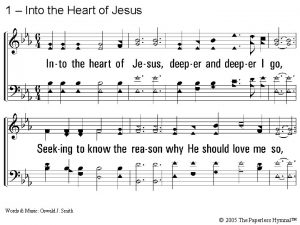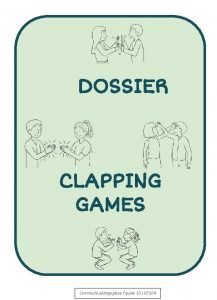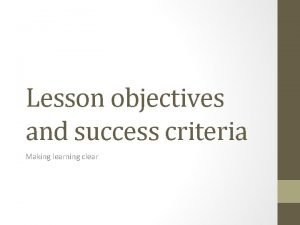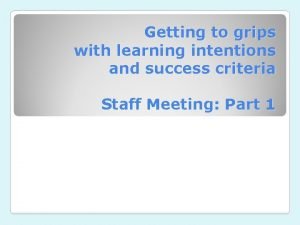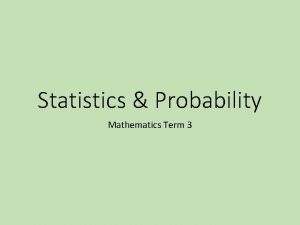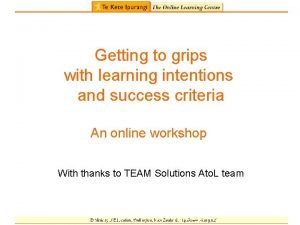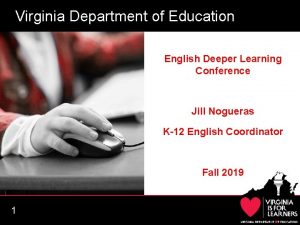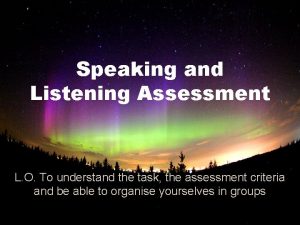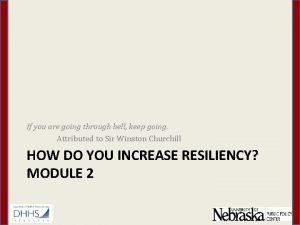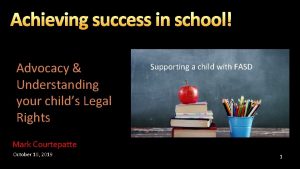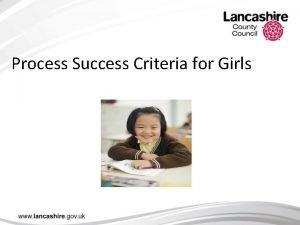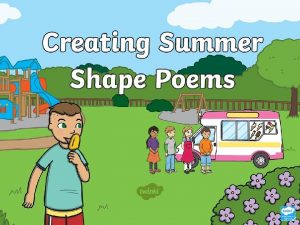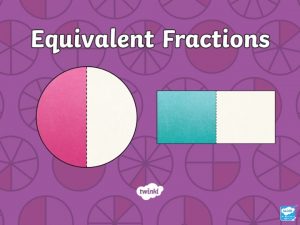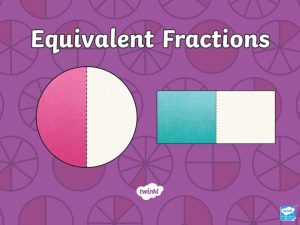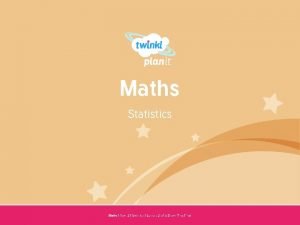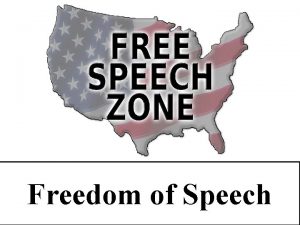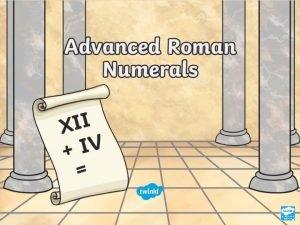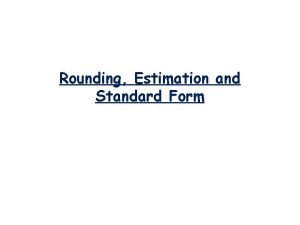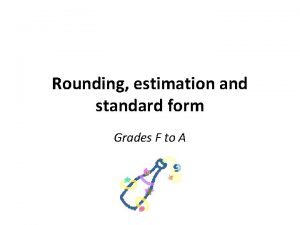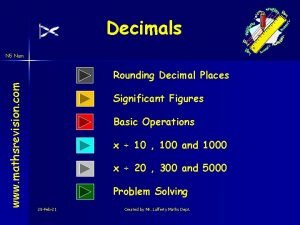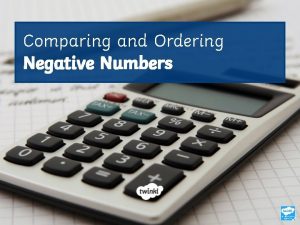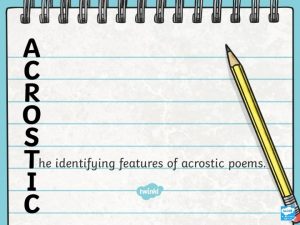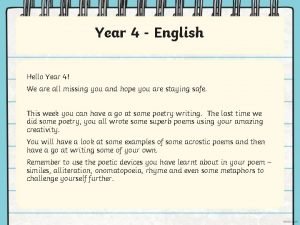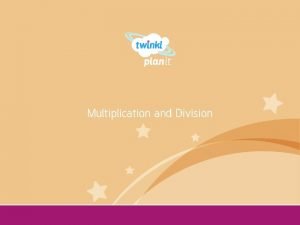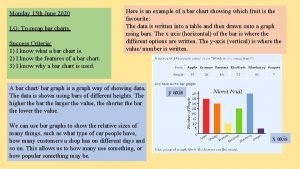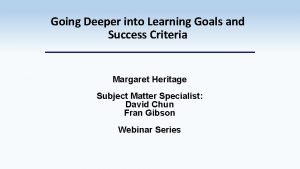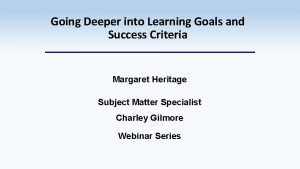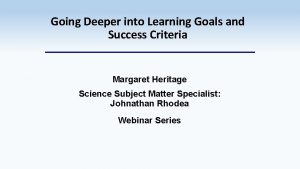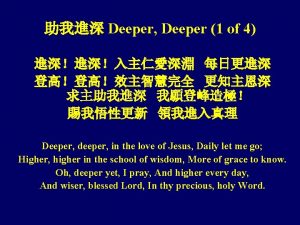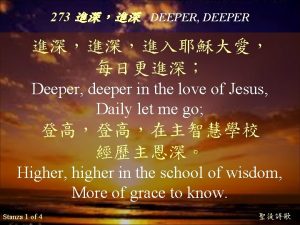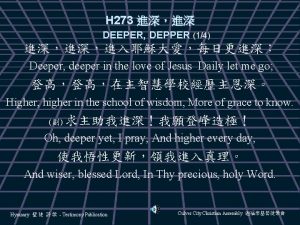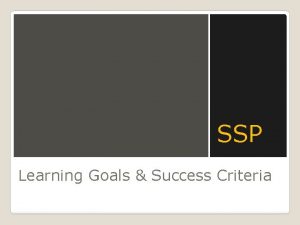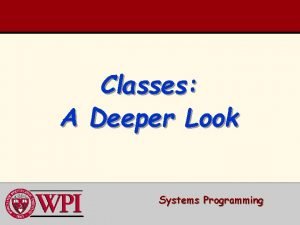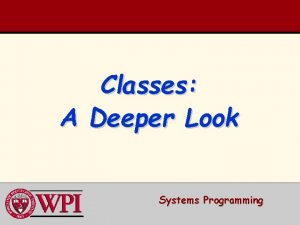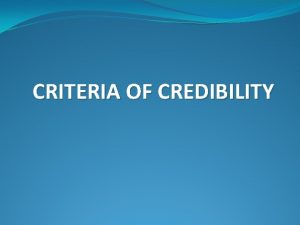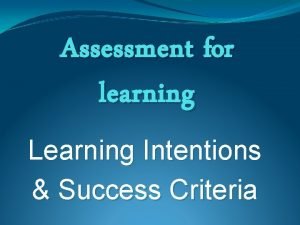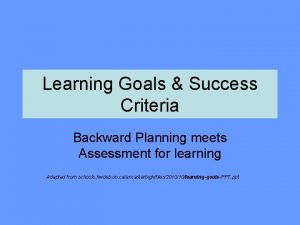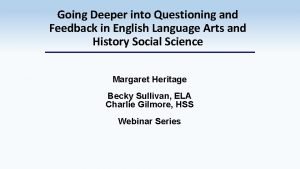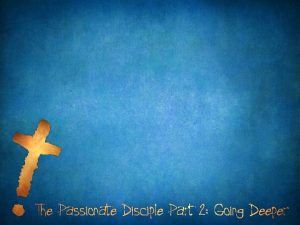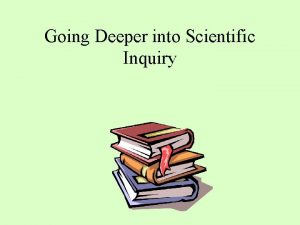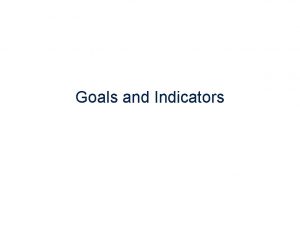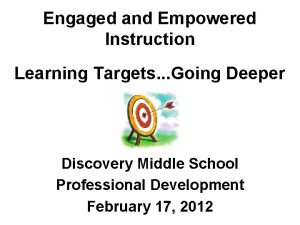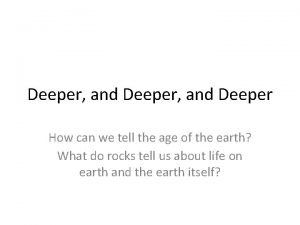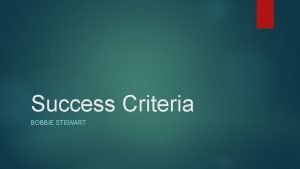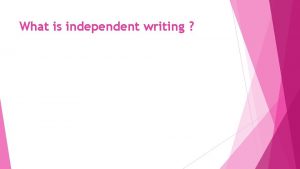Going Deeper into Learning Goals and Success Criteria





































- Slides: 37

Going Deeper into Learning Goals and Success Criteria Margaret Heritage Science Subject Matter Specialist: Johnathan Rhodea Webinar Series

Learning Goals • • • Understand the role of disciplinary knowledge in establishing learning goals and success criteria Understand how progressions are important for learning goals and success criteria Apply understanding to evaluating learning goals and success criteria

Success Criteria • • • Explain disciplinary considerations for learning goals and success criteria Describe how progressions support learning goals and success criteria Identify stronger and weaker goals and criteria and explain reasons for judgment

ü Formative assessment is the term used to describe a type of assessment where the focus is on informing learning, rather than measuring it or summing it up ü Assessment that focuses on the learning as it is taking place ü Purpose is to move learning forward from its current status

I used to…Now I. . . I used to think that formative assessment was just checking for understanding but now I think it is an integral part of a lesson plan and essential to reaching learning goals.

Guiding Questions • Where am I going? • Where am I now? Close the gap Sadler, 1989 • Where to next?


I know what my students are learning I know how I will know if they’ve learned it

A Sailing Ship on an Unknown Sea to an Unknown Destination A child only knows he is going to school. Very quickly, the daily life onboard ship becomes all important. The daily chores, the demands, the inspections become the reality, not the voyage, nor the destination. Mary Alice White, 1971

I know what I am supposed to be learning I know how I will know when I’ve learned it

Teacher Knowledge Concepts Analytical practices Skills Disciplinary Knowledge

Disciplinary Considerations: Science • Science education brings out the awe and wonder of the natural world to our students • Experiencing the process of doing science is a 3 -dimensional endeavor https: //www. youtube. com/watch? v=c 0 En-_BVb. Gc

http: //nstahosted. org/pdfs/ngss/resources/Three. Dimensio ns. Of. NGSS. pdf

http: //nstahosted. org/pdfs/ngss/resources/Three. Dimensio ns. Of. NGSS. pdf

Discrete, Atomistic Learning


Connected Learning

Progression Concepts, analytical practices, skills

Where am I going?

http: //nstahosted. org/pdfs/ngss/resources/Three. Dimensio ns. Of. NGSS. pdf

Science: Disciplinary Core Idea Progression Appendix E Progressions within the NGSS https: //www. nextgenscience. org/sites/default/files/resour ce/files/Appendix. E-Progressionswithin. NGSS-061617. pdf

http: //nstahosted. org/pdfs/ngss/resources/Three. Dimensio ns. Of. NGSS. pdf

http: //nstahosted. org/pdfs/ngss/resources/Three. Dimensio ns. Of. NGSS. pdf

Performance Expectations are 3 -Dimensional Performance Expectation (5 -LS 1 -1): Support an argument that plants get the materials they need for growth chiefly from air and water. This Performance expectation is built from the following three dimensions. DCI (LS 1. C): Organization for Matter and Energy Flow in Organisms - Plants acquire their material for growth chiefly from air and water. SEP: Engaging in Argument from Evidence - Support an argument with evidence, data, or a model. CCC: Energy and Matter - Matter is transported into, out of, and within systems. Resources: https: //www. cde. ca. gov/ci/sc/cf/scifwprepubversion. asp https: //ngss. sdcoe. net/NGSS-Standards

Transferable Knowledge and Skills


What Makes a Good Learning Goal? • Clear and linked to the big picture of learning (the purpose and the context for learning) • Focused on the learning • Written/communicated from the students’ perspective (i. e. , not in teacher- or standardsspeak) • Realistic and time-limited (i. e. , span one lesson) • Lead to rich, productive learning experiences

What Makes Good Success Criteria? Clear and closely linked to the learning goal Continue to focus on the learning Illustrate the expected learning Written/communicated from the students’ perspective (i. e. , not in teacher- or standardsspeak) • Support rich, productive learning experiences • •

BIG IDEAS: - DNA is a warehouse of the genetic code that provides information that controls cellular structure and activities. - NGSS framework dimension 2, Crosscutting Concepts, number 6, Structure and Function. - CCSS ELA for science grades 6 -12, reading and writing. PRIOR KNOWLEDGE: Proteins are macromolecules made of specific sequences of amino acids (structure). Proteins have many functions that control cellular structure and activities. LEARNING GOAL: By the end of the lesson students will understand how the structure of DNA relates to its function. TIME: Three blocks of 90 minutes.

Some Success Criteria • Define terms structure and function • Describe the structure of DNA • Explain why the base pair rule means DNA forms complementary strands and a double helix • Demonstrate the process of transcription


Big idea: Organisms have both internal and external macroscopic structures that allow of growth, survival, behavior, and reproduction. Learning goal: Understand the external structure of cacti and its functions. Success Criteria: • Describe external features • Make predictions about the function of the external features • Explain your reasoning


I used to…Now I. . . • I used to think that formative assessment was purely a form of assessing students at the end of the lesson. Now I see it as an overarching way of designing lessons so that the goals are made very explicit, students are asked to explain where they are with their understanding and that teacher feedback is an essential tool guiding student learning.

Summing Up • Learning goals and success criteria answer the question “where am I going? ” • Disciplinary knowledge is important for LGs and SCs • Knowledge of how learning progresses advantages connected learning

Success Criteria • • • Explain what formative assessment is and where it fits in a comprehensive assessment system Describe the components of a feedback loop formative assessment Explain how learning goals and success criteria drive formative assessment Apply understanding of LGs and SCs to create them Explain how the classroom culture can support or inhibit formative assessment

Thank You! 37
 Into the heart of jesus deeper and deeper i go
Into the heart of jesus deeper and deeper i go Tic tac toe going high going low going criss cross lollipop
Tic tac toe going high going low going criss cross lollipop Strategic goals tactical goals operational goals
Strategic goals tactical goals operational goals Strategic goals tactical goals operational goals
Strategic goals tactical goals operational goals Lesson objectives and success criteria
Lesson objectives and success criteria Example learning intentions
Example learning intentions Learning intentions and success criteria examples
Learning intentions and success criteria examples Learning intentions and success criteria for mathematics
Learning intentions and success criteria for mathematics Learning intention examples
Learning intention examples Deeper learning conference
Deeper learning conference Speaking and listening assessment
Speaking and listening assessment If you are going through hell keep going
If you are going through hell keep going Your child's success or lack of success
Your child's success or lack of success Your child's success or lack of success
Your child's success or lack of success General goals and specific goals
General goals and specific goals Examples of generic goals and product-specific goals
Examples of generic goals and product-specific goals Process success criteria
Process success criteria Shape poem success criteria
Shape poem success criteria Acrostic of g
Acrostic of g Success criteria for equivalent fractions
Success criteria for equivalent fractions Equivalent fraction of 6/8
Equivalent fraction of 6/8 What is a autobigraphy
What is a autobigraphy Biography conclusion example
Biography conclusion example Success criteria for listening skills
Success criteria for listening skills Tally chart success criteria
Tally chart success criteria Five bar gate counting
Five bar gate counting Speech success criteria
Speech success criteria Roman numerals success criteria
Roman numerals success criteria What is standard form
What is standard form Rounding success criteria
Rounding success criteria Informal letter success criteria
Informal letter success criteria Rounding success criteria
Rounding success criteria Negative numbers learning objectives
Negative numbers learning objectives Autobiography success criteria
Autobiography success criteria Acrostic poem about success
Acrostic poem about success Hello year
Hello year Multiplication success criteria
Multiplication success criteria Bar chart success criteria
Bar chart success criteria
